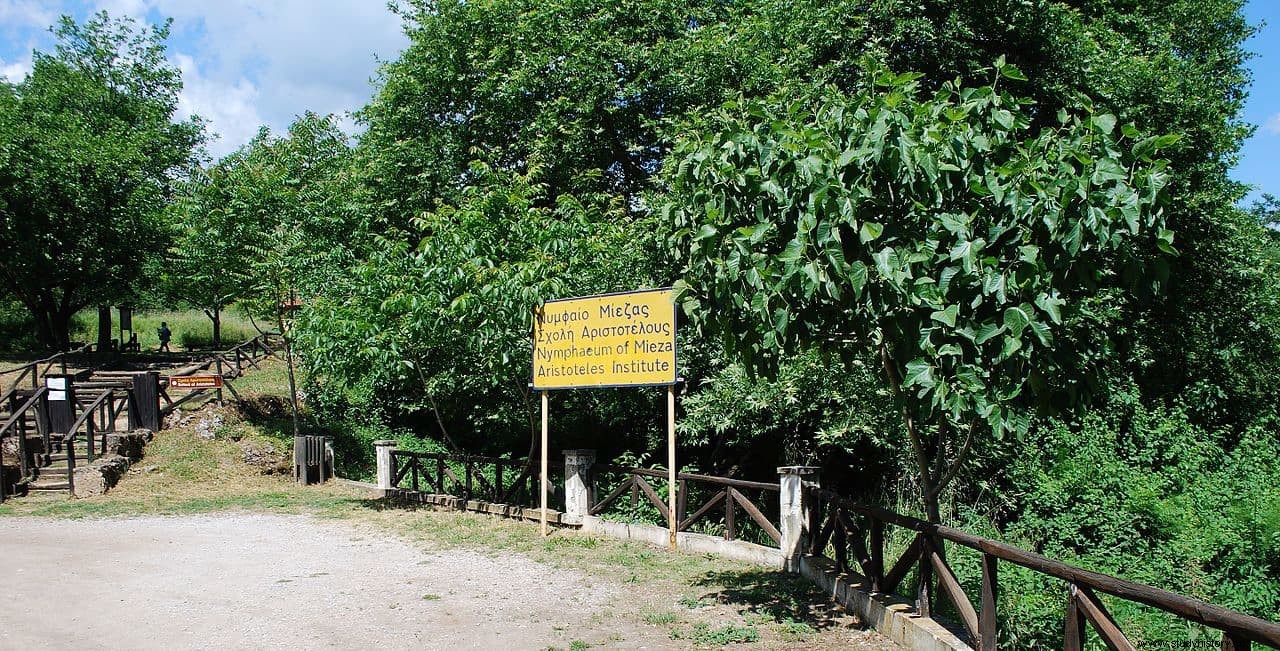When Alexander the Great was already fighting in Asia, strange news came to him from his homeland:his tutor Aristotle had made his teachings public, those same doctrines with which he had imbued the mind and soul of the young Macedonian, allowing everyone to meet them. Alexander's disappointment is recorded in the supposed letter that he immediately sent to the philosopher, quoted by Plutarch:
Aristotle's response, as Plutarch continues, was to defend himself by assuring his pupil that he should be calm, because in reality his treatises on Metaphysics were not useful for learning and instructing, since they were written of course to serve as an index or memory to those already indoctrinated . Unequivocally, whether the answer is apocryphal or not, it is a clear defense of the figure of the teacher, without whose guidance knowledge cannot be interpreted .

Aristotle had been called by Philip II of Macedon in 343 BC. for him to be Alexander's tutor. To convince him, he had to have certain gestures of favor, including the granting of an appropriate place for the development of the educational work, as Plutarch also tells us:
Of the eight years that Aristotle spent at the Macedonian court, he taught Alexander only two, until he began his military career, along with other young men such as Ptolemy, Cleitus, Hephaestion and Cassander. The teaching took place in the Nymphaeum provided by Philip, whose remains we are still lucky enough to be able to contemplate and visit today.

It is located in Isvoria, on the outskirts of the ancient Macedonian Mieza of which, apart from the remains of the Nymphaeum, excavations carried out since 1954 have found several richly decorated Hellenistic tombs, some residential buildings and even a theater from Roman times (discovered in 1992). Today it belongs to the municipality of Nausa, in Central Macedonia and the foothills of Mount Vermio, just two kilometers from the capital of the same name.
The place where Aristotle taught his philosophy was a sanctuary dedicated to the nymphs, hence the name of Nymphaeum, surrounded by vegetation, fountains and springs. It still retains its natural charm, enhanced by the ruins of the walls that supported a two-story stoa with Ionic columns, and the three natural caves that were included in the school grounds. On the surface of the vertical rock, you can still see the openings where the beams that supported the roof of the stoa or porch were built specifically.

The site had already been known since the mid-19th century thanks to the French traveler Delacoulonche, but the density of vegetation meant that it remained inaccessible until the archaeologist Photis Michael Petsas rediscovered it in 1964. It was precisely the remains of the stoa from the mid-4th century BC, and its comparison with the descriptions of ancient sources (mainly Plutarch and Pliny), which allowed Petsas (director of the excavations until 1968) to identify the place with the Nymphaeum and the school of Aristotle.
